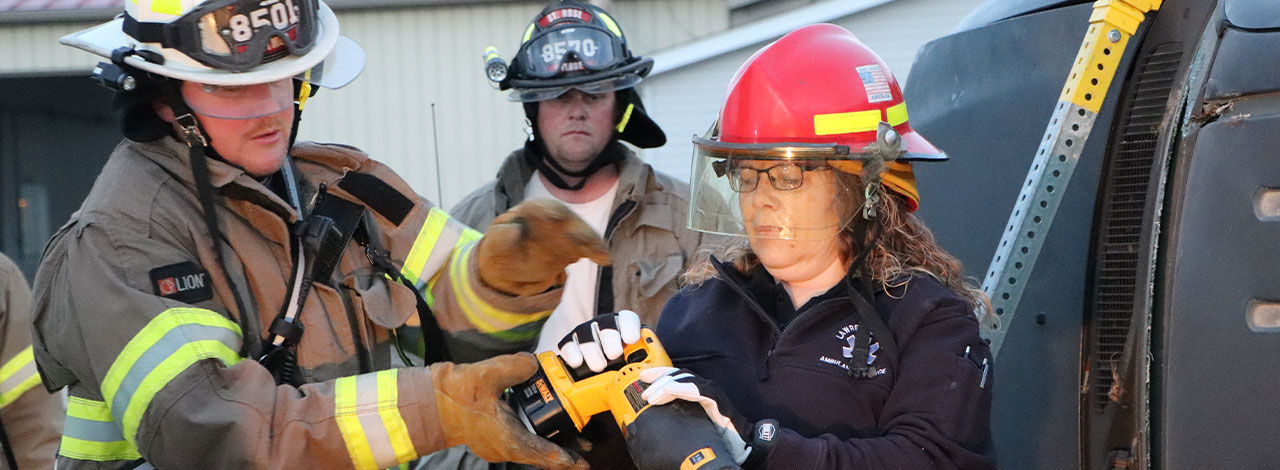Paramedicine
Associate in Applied Science
Modes of Instruction
Click here to learn more about the modes of instruction offered at Kaskaskia College.
Demand for emergency medical services continues to increase and job growth in the field of emergency medical services is excellent. EMT Paramedics enjoy good job security, as emergency services are an essential part of the healthcare system. According to labor market statistics, the need for emergency medical personnel is growing, so now is the time to become part of this exciting field.
Students completing KC's Associate in Applied Science degree in Paramedicine will enter the profession as an EMT/Paramedic licensed at both State and National Levels. This degrees signifies that the student has met all requirements to be certified by the State of Illinois Department of Public Health to be employed in the field of emergency medicine.
Completion of the A.A.S. in Paramedicine degree does not guarantee licensure. There are some conditions for which the Illinois Department of Public Health may refuse to issue a license. Please consult with the Coordinator for EMS Education to avoid license application hindrances.
The Goal of the Paramedicine program is: To prepare competent entry-level Paramedics in the cognitive (knowledge), psychomotor (skills), and affective (behavior) learning domains with or without exit points at the Advanced Emergency Medical Technician and/or Emergency Medical Technician, and/or Emergency Medical Responder levels.
The Paramedicine program prepares students to pass the National Registry of EMTs Paramedic certification examination and practice as Registered Paramedics.
CAAHEP Accredited Paramedic Programs and CoAEMSP Letter of Review (LoR) Programs track and report outcome measures annually to the Committee on Accreditation for the Emergency Medical Services Professions (CoAEMSP). The most current CoAEMSP Annual Report was for the calendar year 2022.
The 2022 success rate for the National Registry of EMT Paramedic Cognitive exam was 100%.
The 2022 positive placement rate for graduates was 100%. Positive placement is defined by the CoAEMSP as being employed full or part-time in a related field and/or continuing their education and/or serving in the military. Positive placement is measured at the completion of the program.
The 2022 retention rate was 25%.
No graduates have tested during the 2023 reporting year.
No graduates during the 2021 reporting year.
Clinical Experience
During the program, in planned semesters, each student is prepared for career opportunities in the field of Emergency Medical Services (EMS), including, but not limited to, urban and rural ambulance services and/or fire departments; hospital Emergency Room Services personnel; industrial emergency services personnel; clinical personnel; and positions overseas.
What You Can Do
- Paramedic/EMT
- Paramedic-First Responder
Program Details
PARM_0100_DEGR
Program Student Learning Outcomes
- Demonstrate passing scores on licensure examinations at/or above national average first time success rates as defined by CoAEMSP standards.
- Execute concepts of clinically competent entry-level EMT-Paramedic at completion of program.
- Demonstrate mastery of critical thinking concepts.
- Exhibit mastery of professional and effective communication techniques.
Students completing this degree must also complete curriculum requirements aligned with General Education Student Learning Outcomes.
Paramedicine Faculty

Cynthia Field
EMT/Paramedicine Program Facilitator
Travis Field
Healthcare Simulation Lab Technician/AHA CoordinatorContact Us
Admissions
Phone | 618-545-3040
Fax | 618-545-3393
- Main Campus
- Health and Business, HB 100

